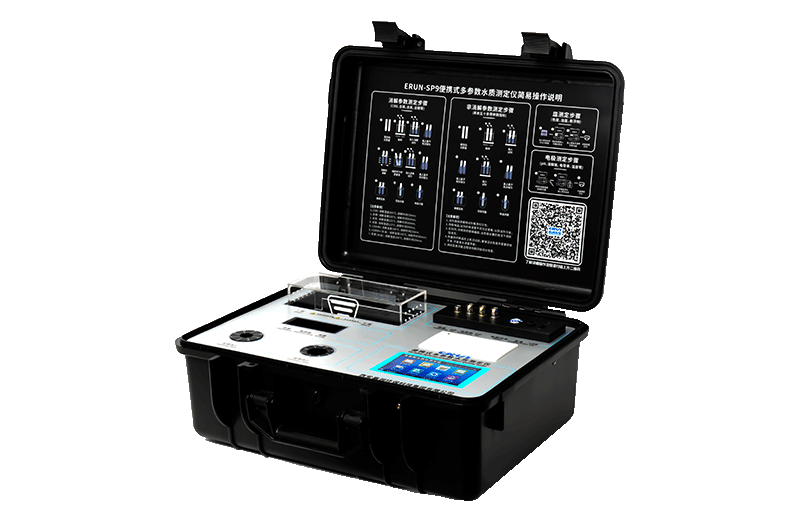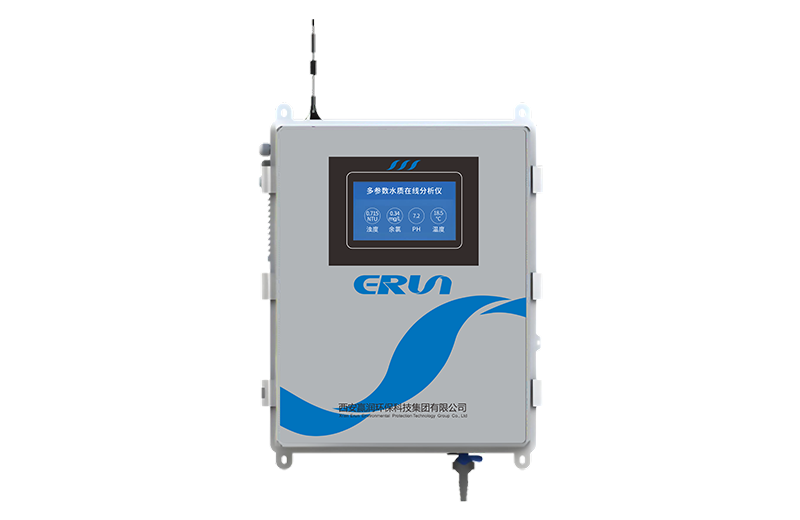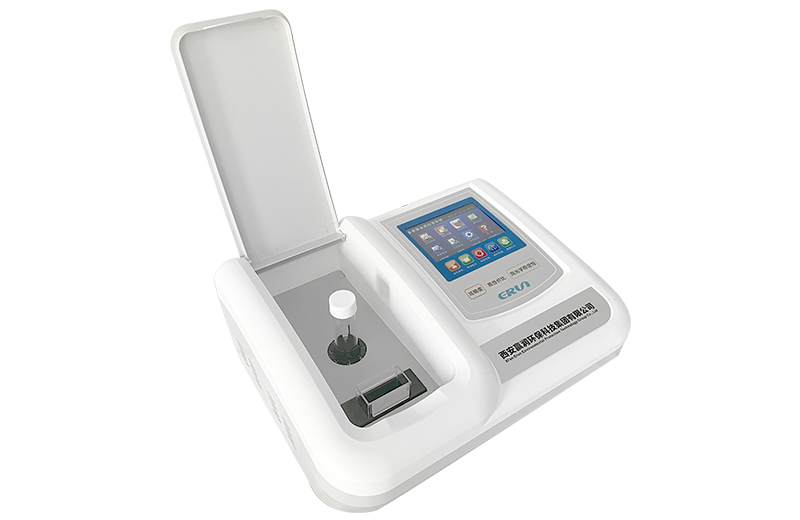Access to safe drinking water is a cornerstone of public health, preventing waterborne diseases and ensuring water is palatable and safe for consumption. Regular testing of water quality parameters such as Chemical Oxygen Demand (COD), pH, and temperature is essential to identify contaminants and comply with international and national standards, such as the World Health Organization’s (WHO) Guidelines for Drinking-Water Quality and China’s GB 5749-2022. This article explores these critical parameters, their significance, measurement methods, and the role of advanced detectors like the ERUN-SP9 in ensuring water safety. Through real-world applications and case studies, we highlight how such tools empower municipalities, industries, and communities to maintain high-quality drinking water.

Chemical Oxygen Demand (COD) measures the amount of oxygen required to chemically oxidize organic and inorganic matter in water, expressed in milligrams per liter (mg/L). While primarily used in wastewater and surface water analysis, COD can indicate organic contamination in drinking water, which may pose health risks if levels are elevated.
High COD levels suggest the presence of organic pollutants, which can deplete dissolved oxygen and affect water quality. In drinking water, COD is expected to be very low, as organic matter should be minimal. Although the WHO does not specify a COD guideline, some national standards, such as China’s GB 5749-2022, reference aggregate organic parameters, including COD, under GB/T 5750.7-2006. Research suggests COD levels in safe drinking water should typically be less than 5 mg/L, with some standards citing 4 mg/L or lower as acceptable.
COD is measured using a chemical test where water samples are treated with a strong oxidizing agent (e.g., potassium dichromate) under acidic conditions. The oxygen consumed is quantified, often via spectrophotometry. Advanced detectors like the ERUN-SP9 employ spectrophotometric methods post-digestion, offering rapid and accurate results.
| Parameter | Standard | Recommended Limit | Source |
|---|---|---|---|
| COD | GB 5749-2022 (China) | <5 mg/L (indicative) | Code of China |
| COD | WHO Guidelines | Not specified | WHO Guidelines |
pH measures the acidity or alkalinity of water on a scale from 0 to 14, with 7 being neutral. Values below 7 indicate acidity, while those above 7 indicate alkalinity. For drinking water, pH is a critical operational parameter affecting taste, pipe integrity, and disinfection efficacy.
The WHO and the U.S. Environmental Protection Agency (EPA) recommend a pH range of 6.5 to 8.5 for drinking water. Water with a pH below 6.5 can be corrosive, leaching metals like lead or copper from pipes, which may pose health risks. Conversely, a pH above 8.5 can cause scaling, affect taste, and reduce disinfection efficiency. Maintaining pH within this range ensures water safety and palatability.
pH is measured using pH meters with electrodes or test strips. Modern detectors like the ERUN-SP9 incorporate precise pH electrodes, providing real-time, accurate readings suitable for both laboratory and field use.
| Parameter | Standard | Recommended Range | Source |
|---|---|---|---|
| pH | WHO Guidelines | 6.5–8.5 | WHO Guidelines |
| pH | EPA (US) | 6.5–8.5 | EPA Regulations |
| pH | GB 5749-2022 (China) | 6.5–8.5 | Code of China |
Temperature influences water quality by affecting chemical reactions, microbial growth, and disinfection processes. While not directly regulated for health, temperature impacts the palatability and safety of drinking water. Water that is too warm may promote pathogen growth, while overly cold water may be unpalatable.
There is no universal health-based standard for drinking water temperature, but a range of 10–25°C is generally considered comfortable for consumption. Higher temperatures can reduce the effectiveness of disinfectants like chlorine, while lower temperatures may slow chemical reactions.
Temperature is measured using thermometers or integrated sensors in water quality detectors. The ERUN-SP9 includes temperature sensors, allowing simultaneous monitoring with other parameters.

Beyond COD, pH, and temperature, several parameters are critical for drinking water quality:
Turbidity: Measures water clarity, with low levels (<1 NTU) indicating minimal suspended particles that could harbor pathogens.
Total Dissolved Solids (TDS): Represents dissolved minerals and salts, affecting taste. Levels of 50–150 mg/L are typically acceptable.
Microbiological Contaminants: Total coliforms and E. coli should be absent, as their presence indicates fecal contamination.
Heavy Metals: Lead, arsenic, and mercury have strict limits (e.g., lead <0.01 mg/L per WHO) due to health risks.
These parameters are governed by standards like WHO Guidelines, EPA’s National Primary Drinking Water Regulations, and China’s GB 5749-2022, ensuring comprehensive water safety.
Accurate and timely water quality testing is vital for compliance with regulations and protecting public health. Multi-parameter detectors streamline this process by measuring multiple parameters simultaneously, reducing time and cost.
The ERUN-SP9 is a cutting-edge multi-parameter water quality detector designed for versatility and precision. Its key features include:
Comprehensive Detection: Measures nearly 100 parameters, including COD, pH, temperature, turbidity, and TDS, using electrode and spectrophotometric methods.
High-Efficiency Digestion: Features a dual-temperature zone system for simultaneous testing of multiple samples.
Field-Ready Design: Dust-proof, water-proof, and collision-proof, with a 48-hour battery life for outdoor use.
Advanced Data Management: Stores up to 99,999 records, supports USB data export, and offers bilingual (Chinese/English) interface.
Customization: Allows parameter and range customization, ensuring adaptability to specific needs.
These features make the ERUN-SP9 ideal for municipal water treatment, environmental monitoring, and emergency response.
In urban settings, water treatment plants rely on continuous monitoring to ensure compliance with standards like GB 5749-2022. The ERUN-SP9’s ability to measure COD, pH, and other parameters in real-time helps operators detect and address contamination promptly, ensuring safe water distribution.
In rural areas, where communities depend on wells, portable detectors are crucial. For example, a small community in China used the ERUN-SP9 to test well water for pH and COD, identifying acidic conditions that required neutralization to prevent pipe corrosion and ensure safety.
After natural disasters like floods, rapid water quality assessment is critical to prevent outbreaks of waterborne diseases. The ERUN-SP9’s portability and long battery life enable environmental agencies to test water sources on-site, ensuring safe drinking water in crisis situations.
Industries near water sources must monitor effluents to prevent contamination of drinking water. The ERUN-SP9’s multi-parameter capabilities help industries comply with environmental regulations, protecting downstream water quality.

Ensuring drinking water quality is a shared responsibility that requires vigilant monitoring of parameters like COD, pH, and temperature. These parameters, governed by standards such as WHO Guidelines and China’s GB 5749-2022, are critical for safeguarding public health and maintaining water system integrity. The ERUN-SP9 offers a reliable, versatile solution for water quality testing, empowering municipalities, industries, and communities to deliver safe drinking water. By investing in advanced detectors, we can protect both human health and the environment, ensuring access to clean water for all.